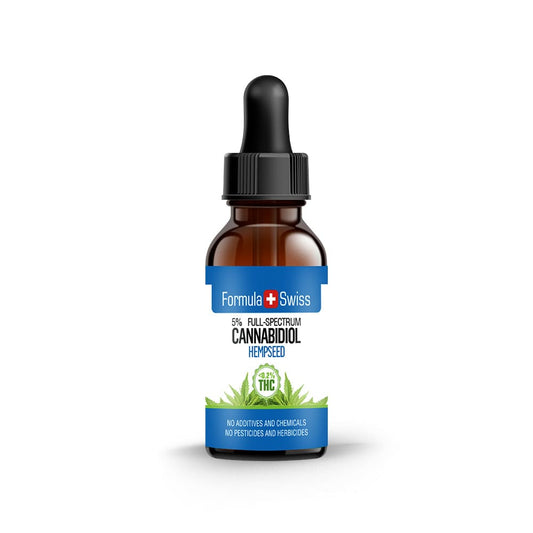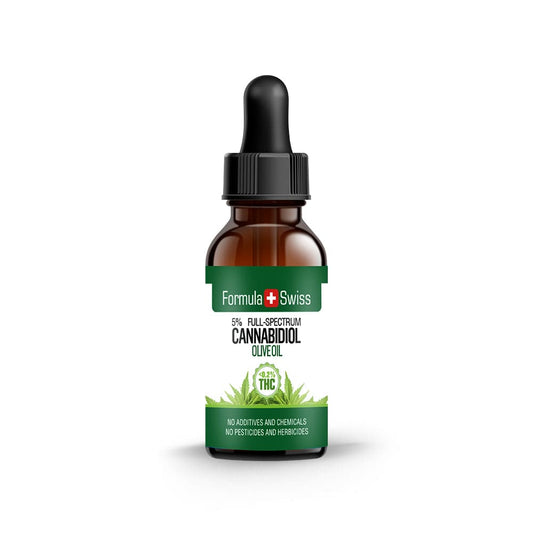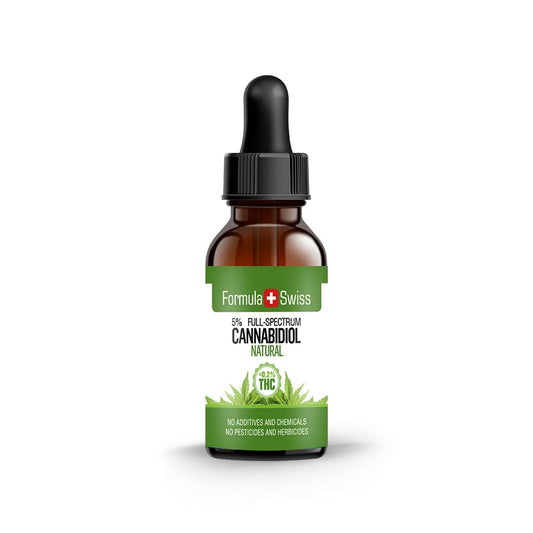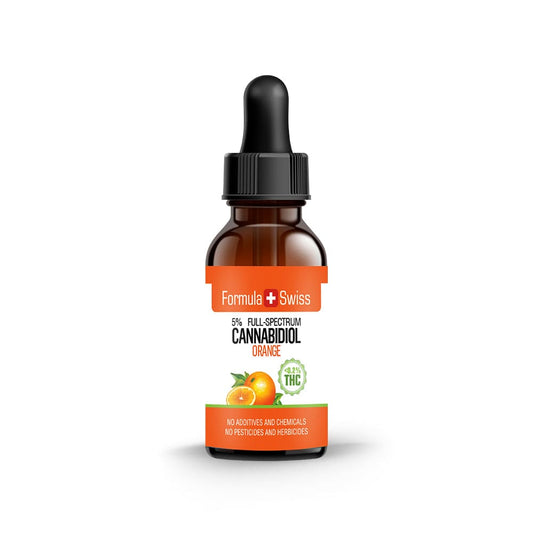One type that continues to attract interest from growers and breeders is Cannabis ruderalis. This hardy, compact variety is notable for one key trait: it flowers according to age rather than light cycles. That characteristic alone has made it a valuable option in certain cultivation settings.
After more than a decade working in cannabis cultivation and CBD product development, I have come to recognise the untapped potential within these lesser-known branches of the plant family.
In this article, I will outline what sets ruderalis apart, its origins, its agricultural value, and why it deserves attention. Whether you are exploring autoflowering strains or simply curious about the broader field of cannabis genetics, this resilient plant offers much to learn.
Prefer watching over reading? This video covers the key points from the article:
Save up to 30% when you order your CBD oil today
Key takeaways
- Understanding the distinctive nature of cannabis ruderalis within the cannabis genus.
- Exploring the unique traits of ruderalis, setting it apart from its cannabis counterparts.
- Assessing the practical implications of autoflowering capabilities for cannabis cultivation.
- Appreciating ruderalis as a time-efficient option due to its plant maturity-based flowering.
- Recognising the lesser-known cannabis ruderalis for its potential advantages in cannabis agriculture.
This article is provided for informational purposes only and does not relate to any of the products available in our webshop. For more information, please see our full disclaimer.
Introduction to Cannabis ruderalis
Cannabis ruderalis is a distinct member of the cannabis genus, recognised for its ability to adapt to colder climates. According to a review published in Neurotherapeutics, it likely originated in southern Russia and has adapted to conditions less favourable for Cannabis sativa.
Studying the origins of Cannabis ruderalis provides insight into how plant species evolve to survive and thrive in challenging environments.

The origins of Cannabis ruderalis
Cannabis ruderalis is rooted in rugged terrains and has adapted to short summers with long daylight hours. These conditions shaped its unique traits, ensuring survival where other species may struggle. The climate and geography of its native regions highlight the diversity within the cannabis family.
Defining characteristics of Cannabis ruderalis
Research published in 2023 in the Journal of the American Society for Horticultural Science identifies Cannabis ruderalis by its autoflowering trait—initiating flowering according to maturity rather than light cycles.
This genetic adaptation, likely shaped by survival in northern latitudes, has made Cannabis ruderalis especially valuable in breeding programmes aimed at developing early-flowering, day-neutral hybrids.
The plant is compact and fast-growing, well suited to limited spaces or harsher climates. While it typically contains lower levels of tetrahydrocannabinol (THC), it produces notable amounts of cannabidiol (CBD), which adds to its versatility.
Ruderalis varieties support cultivation in demanding conditions and play an important role in improving flowering traits, making them an increasingly valuable influence in modern cannabis breeding.
The unique advantages of autoflowering cannabis
I've seen how autoflowering cannabis changes the game for growers. It's known for its tough genetics, making it easy for anyone to grow. This type of cannabis is perfect for beginners and experts.
What stands out is how fast it grows. With short-cycle cannabis, you can have more than one harvest in a season. This quick growth means more plants and more harvests.
Autoflowering cannabis is also very resilient. It can handle tough growing conditions that would stop other plants. This makes it great for places with changing weather.
- Quick adaptation to varied light conditions
- Resistance to common plant diseases
- Ability to thrive in cooler temperatures
Using autoflowering cannabis is more than a trend. It's a smart way to grow plants efficiently. It uses its quick growth and toughness to help growers succeed.
Order and enjoy up to 30% off your CBD oil purchase
Comparing cannabis species: Ruderalis vs. Sativa vs. Indica
Exploring cannabis reveals unique traits in each species. These traits affect how we grow and use cannabis. Ruderalis genetics stand out, showing different growth and chemical profiles compared to Sativa and Indica.
Physical differences between cannabis species
Cannabis ruderalis looks different from Sativa and Indica. It's smaller and more compact, perfect for tight spaces or hiding. Its leaves are thin and fibrous, unlike the broad leaves of Indica or the long leaves of Sativa.
Ruderalis's small size and thin leaves help it grow in cold, unpredictable places. This makes it great for breeding. Its ability to autoflower also means it can grow well without regular light changes.

Effects and cannabinoid profiles
Cannabis species differ in their cannabinoid profiles, with ruderalis generally producing lower levels of THC compared with sativa or indica. This has made it an attractive option in breeding where minimal psychoactive content is desired.
When crossed with other varieties, ruderalis contributes its autoflowering trait while also enhancing cannabinoid strength through hybridisation. Such hybrids provide a practical combination of growth efficiency and tailored cannabinoid content.
Examining cannabinoid profiles across species highlights the value of genetic diversity in cultivation. Recognising these traits supports more informed choices for breeders and cultivators working with different cannabis varieties.
Cannabis ruderalis and its role in hybridisation
The use of Cannabis ruderalis in hybrid strains is a big step forward in growing cannabis. It brings autoflowering traits to the table. This means Cannabis ruderalis hybridisation makes growing easier and combines the best of Cannabis sativa and Cannabis indica strains. It meets the needs of both farmers and those who use cannabis for health reasons.
By mixing Cannabis ruderalis genetics, breeders create hardy and adaptable strains. These autoflowering hybrids are great for tough environments. They grow well in places not usually good for cannabis.
| Feature | Benefit |
|---|---|
| Reduced flowering time | Allows multiple harvests within a single growing season. |
| Resilience to climate | Capable of thriving in cooler and less predictable climates. |
| Consistency | Autoflowering nature leads to more predictable growth patterns and outputs. |
| Lower maintenance | Requires less intervention to trigger flowering, reducing labour and resources. |
The ruderalis genetics benefits are also about better cannabinoids. This genetic work can make hybrids with more THC or CBD. CBD is wanted for its health benefits. Cannabis ruderalis is key in making new cannabis hybrids. It's all about its natural traits and growing popularity in science and farming.
Understanding low-THC cannabis varieties
Interest in low-THC cannabis varieties has been steadily increasing, particularly among those looking for non-intoxicating options. These strains are usually higher in CBD and lower in THC, making them suitable for uses beyond recreational purposes.
Ruderalis-based plants that are naturally rich in CBD are attracting attention for their stability and distinctive traits. With consistently low THC levels, they are valued by growers and breeders aiming to develop plants with milder profiles.
The rising popularity of CBD-rich ruderalis strains
As the industry continues to evolve, CBD-rich ruderalis strains are becoming more widely recognised. They are appreciated for their low THC content, compact growth and adaptability, making them a practical choice across a variety of cultivation settings.
The cultivation benefits of autoflowering cannabis strains
Autoflowering cannabis strains provide notable advantages for both new and experienced growers. Owing to their Cannabis ruderalis genetics, they follow a straightforward growth cycle that requires less maintenance and does not depend on light schedule adjustments.

These plants are adaptable to a variety of environments and generally complete their life cycle in about 10 weeks. Although individual plants are smaller in size, their rapid turnaround enables multiple harvests within a single season.
Autoflowering strains are valued for their efficiency, compact growth and reduced input needs, making them a practical choice for controlled indoor cultivation and smaller growing spaces.
Here's a comparison that shows why autoflowering strains are good for growing more:
| Feature | Autoflowering cannabis strains | Photoperiod cannabis strains |
|---|---|---|
| Growth speed | 10-12 weeks from seed to harvest | 14-20 weeks, depending on light exposure |
| Light requirement | Less sensitive, does not require light cycle adjustments | Requires specific light schedules for vegetative and flowering phases |
| Yield strategy | Multiple cycles per year, consistent yields | Usually one major harvest per year, higher yield per plant |
| Cultivation difficulty | Easier, suitable for beginners | More complex, requires experience for optimal results |
Autoflowering strains are great for growing more cannabis. They can grow more in a year than other strains. They are perfect for both small and big growers.
Order and enjoy up to 30% off your CBD oil purchase
Tailoring cannabis cultivation for personal use
I've found that new tech in cannabis genetics and growing has changed the game. It lets us use special growing methods that fit our needs. Like craft brewers, we can tweak things to grow cannabis just the way we like it.
Choosing the right plant is crucial for growing cannabis at home. It depends on our environment and what we want to achieve. For example, picking between autoflowering and traditional plants changes the growing time and yield.
Personal cannabis growing lets us get creative with our setup. We can use everything from hydroponics to organic soil. Knowing what each plant needs helps us make it grow better and stronger.
| Variety type | Growth duration | Light requirements | Yield potential |
|---|---|---|---|
| Autoflowering | 8-10 weeks | Less light dependent | Medium |
| Photoperiod | 12-14 weeks | High-light dependent | High |
Using special growing methods lets us make our cannabis just right. We can change light cycles and nutrient schedules. Every choice we make makes our cannabis unique and special.
The environmental adaptability of Cannabis ruderalis
The amazing adaptability of Cannabis ruderalis is shaped by its tough natural habitat. This includes harsh, changing climates. Its strong nature and unique ways of adapting are key to its survival and growth in different places.
Cannabis ruderalis comes from Europe and Central Asia. Its home is where the weather is tough. It can grow well in cold, dark places, unlike other cannabis types.

One of its main tricks is autoflowering. This means it starts flowering on its own after growing for a bit. It doesn't need special light to start flowering. This helps it grow well, no matter the light.
It's also very strong against changing temperatures and bad soil. This makes it great for both nature and farming. It can grow in tough conditions, helping it spread and thrive in many places.
Learning about its adaptations is useful. It shows how Cannabis ruderalis could be used to create strong, easy-to-grow strains. This makes it a fascinating study subject and a key part of future sustainable cannabis farming.
The future of Cannabis ruderalis in breeding and cultivation
Cannabis ruderalis, once overlooked, is now playing a growing role in modern cannabis breeding. Known for its resilience and autoflowering capabilities, ruderalis offers practical advantages, especially in regions with shorter growing seasons or inconsistent light conditions.
In the UK, where cultivation standards are rising, ruderalis genetics are gaining attention. Their ability to thrive with minimal intervention and flower based on age rather than light cycles makes them an appealing choice for both commercial producers and smaller-scale growers.
Future breeding efforts are focusing on integrating desirable traits, like higher cannabinoid content, into autoflowering lines. By addressing traditional limitations such as lower THC levels, breeders are steadily expanding the utility of ruderalis genetics.
These developments signal a steady shift in how cannabis may be cultivated more efficiently and reliably across various environments.
Personal perspective
After spending years working in CBD and hemp production, I’ve developed a real respect for the role Cannabis ruderalis plays in the bigger picture of cannabis cultivation. It might not have the same reputation as sativa or indica, but what it brings to the table, reliability, adaptability, is incredibly useful, especially with the way farming is evolving.
From where I stand, ruderalis isn’t just an oddity. It’s a genuinely valuable piece of the puzzle. Its influence on autoflowering hybrids has already changed how growers think about timing and climate, particularly in places with short seasons or unpredictable weather.
And as breeding techniques keep moving forward, I think ruderalis will continue to help shape more efficient, resilient cannabis strains that meet the real-world demands of growers and the industry as a whole.
Don’t miss out—save up to 30% when you purchase CBD oil today
Frequently asked questions
What exactly is Cannabis ruderalis?
Cannabis ruderalis is a type of cannabis recognised for its automatic flowering cycle. It remains small and typically has lower THC content. Unlike other varieties, it transitions from growth to flowering based on age rather than light exposure.
Where does Cannabis ruderalis originate from?
It originates from Central Asia and Eastern Europe. It adapted to cold climates and short summers, developing resilience and an ability to grow in challenging environments.
What distinguishes Cannabis ruderalis from other cannabis species?
This variety is compact, begins flowering without a change in light, and is relatively easy to manage. Its resilience and simplicity in cultivation have made it appealing to growers in diverse conditions.
What are the benefits of autoflowering cannabis strains?
Autoflowering strains typically have faster growth cycles, allowing multiple harvests within a season. They are suitable for areas with shorter growing windows and are often chosen for their simplicity and reliability in cultivation.
How do Cannabis ruderalis plants physically differ from Sativa and Indica species?
Ruderalis plants are generally shorter and have narrower leaves. These traits are a result of adapting to harsher climates with limited growing seasons.
Can Cannabis ruderalis be used in hybridisation, and if so, what are the advantages?
Yes, it is commonly used in hybrid breeding. Crossing ruderalis with other types can result in hybrids that grow faster and are more tolerant to stress, while inheriting desired traits such as improved yield or chemical profile from other parent strains.
Why are low-THC cannabis varieties such as ruderalis gaining attention?
Low-THC varieties are particularly valued for their suitability in industrial applications and structured product development. They are often selected for use in areas where specific THC thresholds are observed.
What makes autoflowering cannabis strains appealing to growers?
These strains are favoured for their quick growth and flexibility. They can be cultivated in a range of environments and support multiple harvests per year, although they may produce smaller yields per plant compared to traditional varieties.
How has Cannabis ruderalis adapted to its natural habitat?
Ruderalis has developed automatic flowering and cold resistance, allowing it to grow in difficult conditions where other cannabis types might struggle.
What is the future potential of Cannabis ruderalis in breeding and cultivation?
Cannabis ruderalis continues to be a focus in breeding programmes aimed at improving traits such as resilience, yield, and chemical profiles. Its ability to grow automatically and withstand stress contributes to its ongoing relevance in cultivation strategies.






